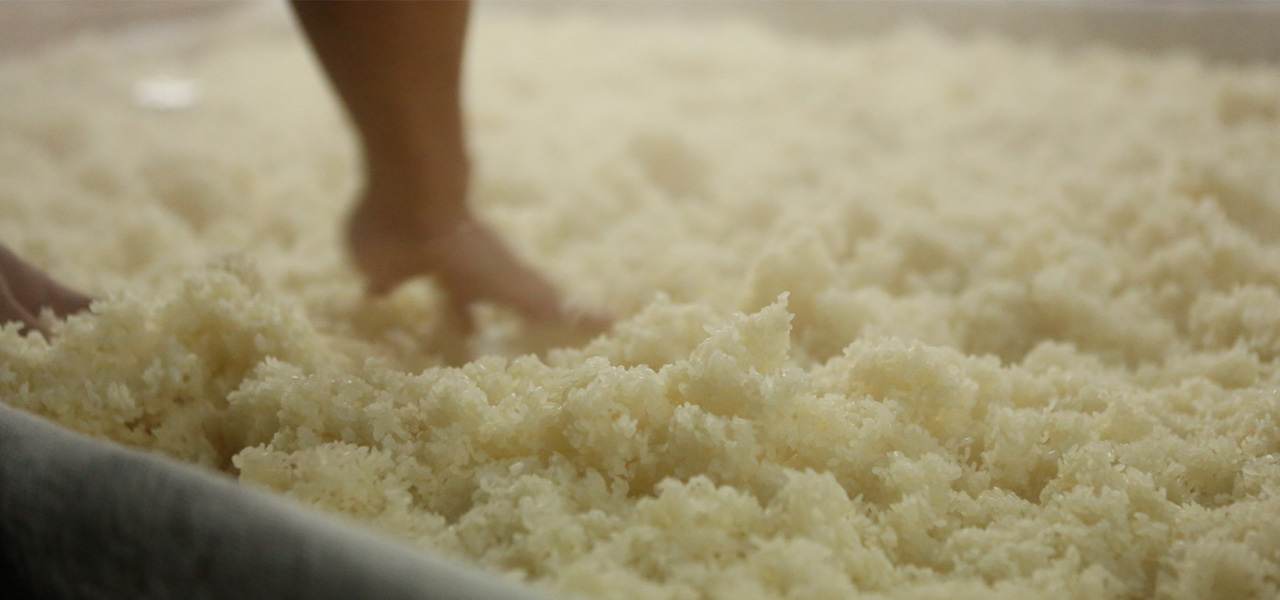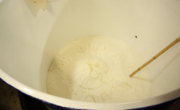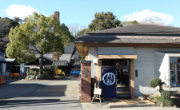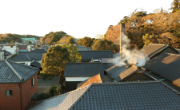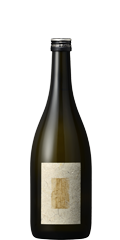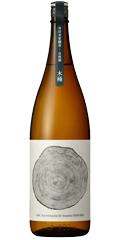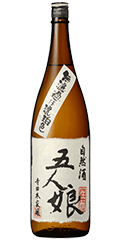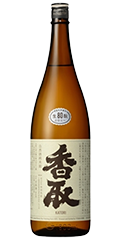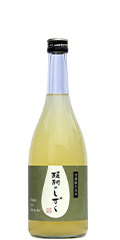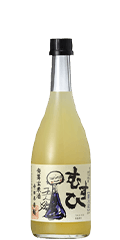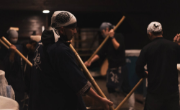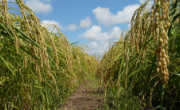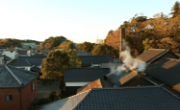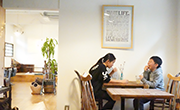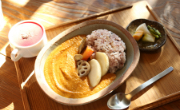Product InformationKON
Where we are headed
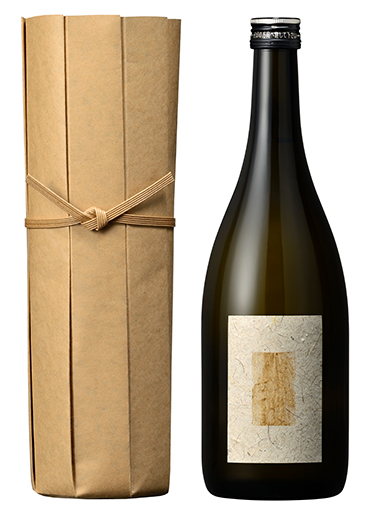
Our KON product initiative, with the Japanese word “kon” literally meaning ” cultivating the land,” will be a clear indicator of where Terada Honke is intending to head as a challenger eager to delve more deeply into the world of natural sake. Although the quantity will be limited due to constraints, such as the amount of rice available and manpower, we have done everything we can to convey our wholehearted passion as a natural sake brewery through this brand.
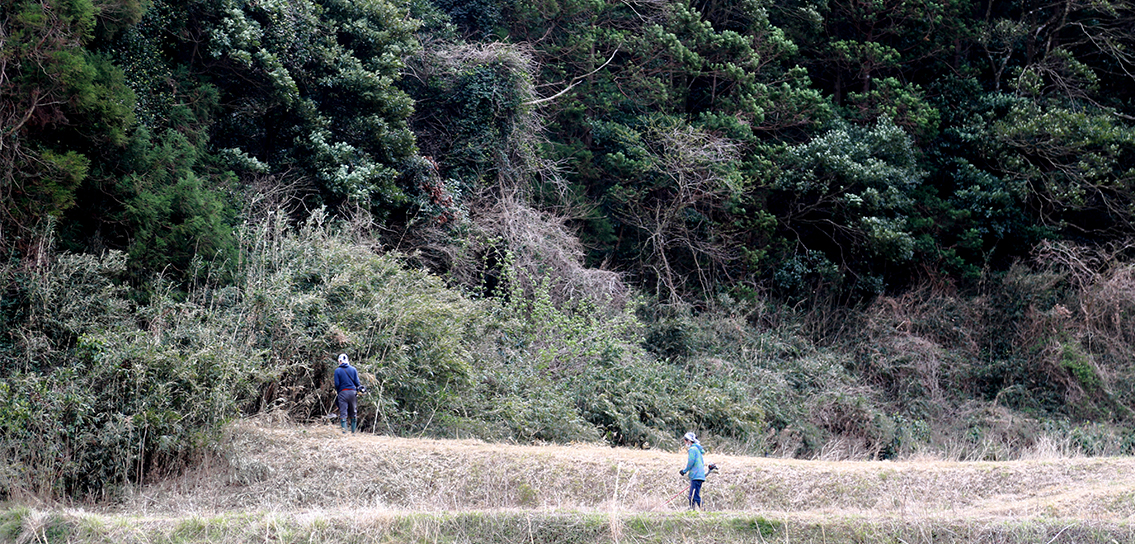
Cultivating abandoned farmland
Terada Honke started engaging in a rice field restoration project from 2021. Through this project, we are working on borrowing yatsuda (a local term for rice fields positioned in valleys) from owners that have left them unused for a decade or longer and restoring them into rice fields again.
When we first went to see some abandoned rice fields, the grass and shinotake bamboos that have overgrown while they were left untouched covered both the fields that were once rice paddies and the roads leading to them, including some places where bushes have become overgrown. Yet, we were amazed by the richness of the natural environment around these fields when we found freshwater crabs in the stream created by the dripping water flowing from the mountains. We thought that if we could use this natural stream water to grow rice for our brewing, we would be able to enter further into the world of natural sake-making. So, our brewers got together to cut grass and draw water into these fields so as to cultivate them little by little into rice paddies again.
At first, everyone was doubtful. We were jokingly saying whether it would really become a rice field again as planned.
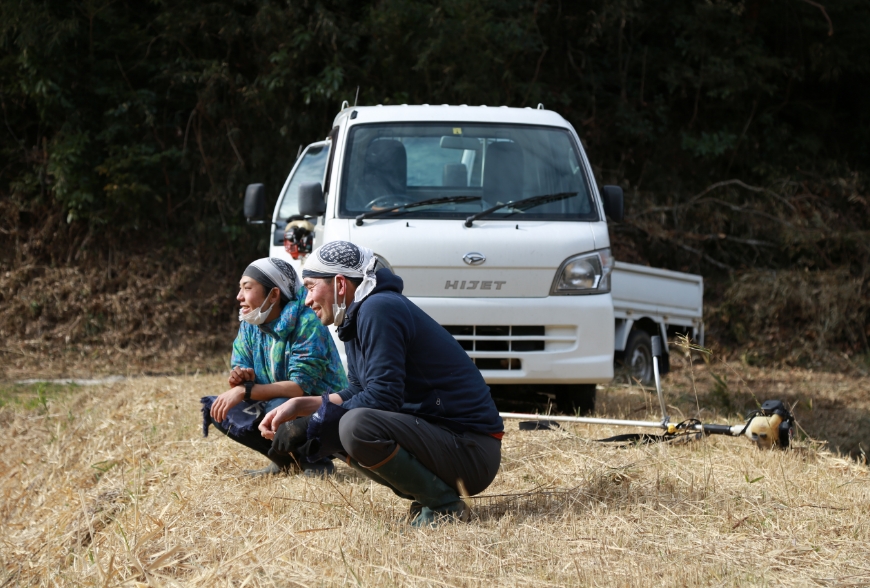
Thanking our predecessors and envisioning our own dreams
As we continued to mow the grass, we gradually began to see the original form of the yatsuda, and it became clear that all sides formed large, terraced rice fields. People in the old days must have thought to turn this area into terraced rice fields after seeing the streams of water flowing in from the mountains. This realization filled us with gratitude to our predecessors.
How beautiful would it be if this whole area became covered with such rice fields? If we could grow rice here, the yield would be enough to fill up our wooden vat. Then, we thought, it would be nice if we could make sake from the rice that we harvested here. How wonderful would it also be if someday we could invite many guests to plant rice together and have a few drinks with them here? These were the small dreams that we shared together with our brewers as we saw the sun starting to set, feeling the refreshing breeze blow through the valley floor.
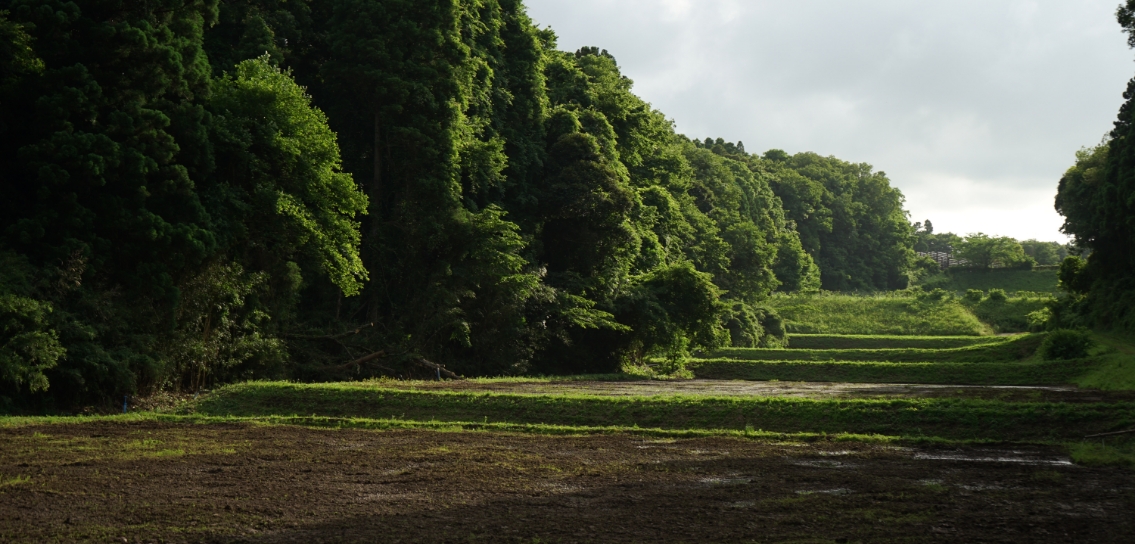
Always “failing upward”
As soon as we thought we had finally restored the land, we found out that the spring water did not accumulate enough and remained low. Because rice cannot grow well without sufficient amounts of water, we decided to use a pump to supply groundwater. Sometimes, after a storm, some big tree was suddenly lying collapsed on the side of the rice field.
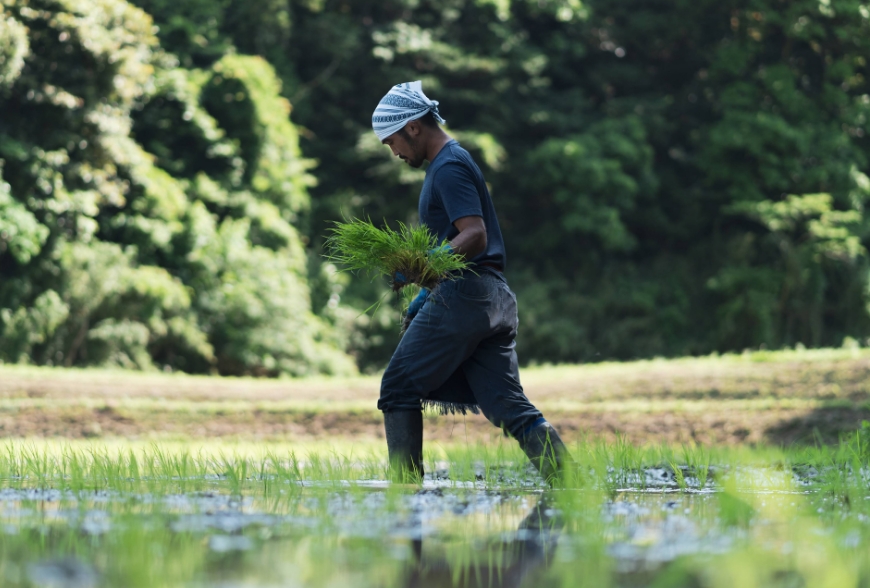
More in line with nature
The cultivated fields are planted with mainly native rice varieties that have been nurtured by the brewers at Terada Honke. Since there is no feedwater system to supply agricultural water, we have to utilize all the available natural sources of water (from the springs, underground, falling rain) and to take advantage of the rich soil. The rice grows here without the help of any pesticides or fertilizers. The only help it receives is from the natural creatures inhabiting these fields and the microorganisms that live in the waters and underground. When we harvest, we try to do it by hand as much as possible, and then we hang the harvested rice out to dry in the sun.
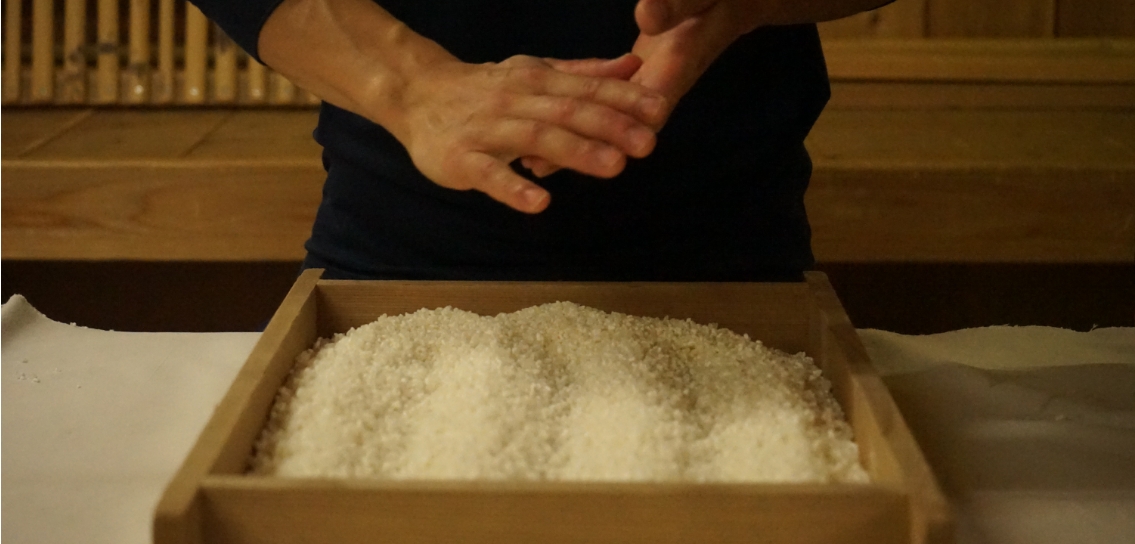
More work by hand
In order to make sake by hand as much as possible, we use tane koji (seed malt) made from the microorganisms living in the brewery that work as koji (malt) mold. This tane koji is used to make the koji (malt) for brewing KON according to the futa koji method.
When we make the shubo (yeast starter), we place steamed rice, koji, and water in a half-cut vat. Our brewers sing traditional sake brewing songs while they perform the motosuri (the process of mashing the mixture of steamed rice, water, and koji). The moromi (mash) is prepared in a wooden vat.
The microorganisms that live in the brewery naturally enter the shubo and moromi and begin the fermentation process. The fermented mash is carefully squeezed through the funashibori (tank squeezing) process to extract the finest portion that would become what we know as “sake.”
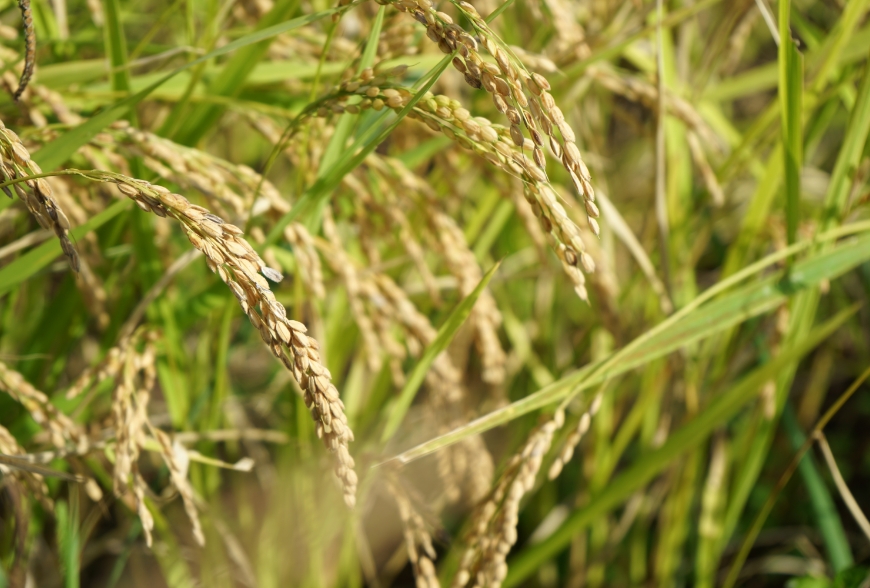
A sake that we share with nature
If the product that we achieve at the end of the fermentation process driven by the microorganisms that live in the brewery can be received as a reflection—no matter how subtle that may be—of the natural scenery of the yatsuda and the radiating lifeforce of the natural creatures and invisible microorganisms inhabiting the air, waters, and underground, we will be able to feel that our ongoing pursuit of natural sake brewing has a meaning worth continuing.
